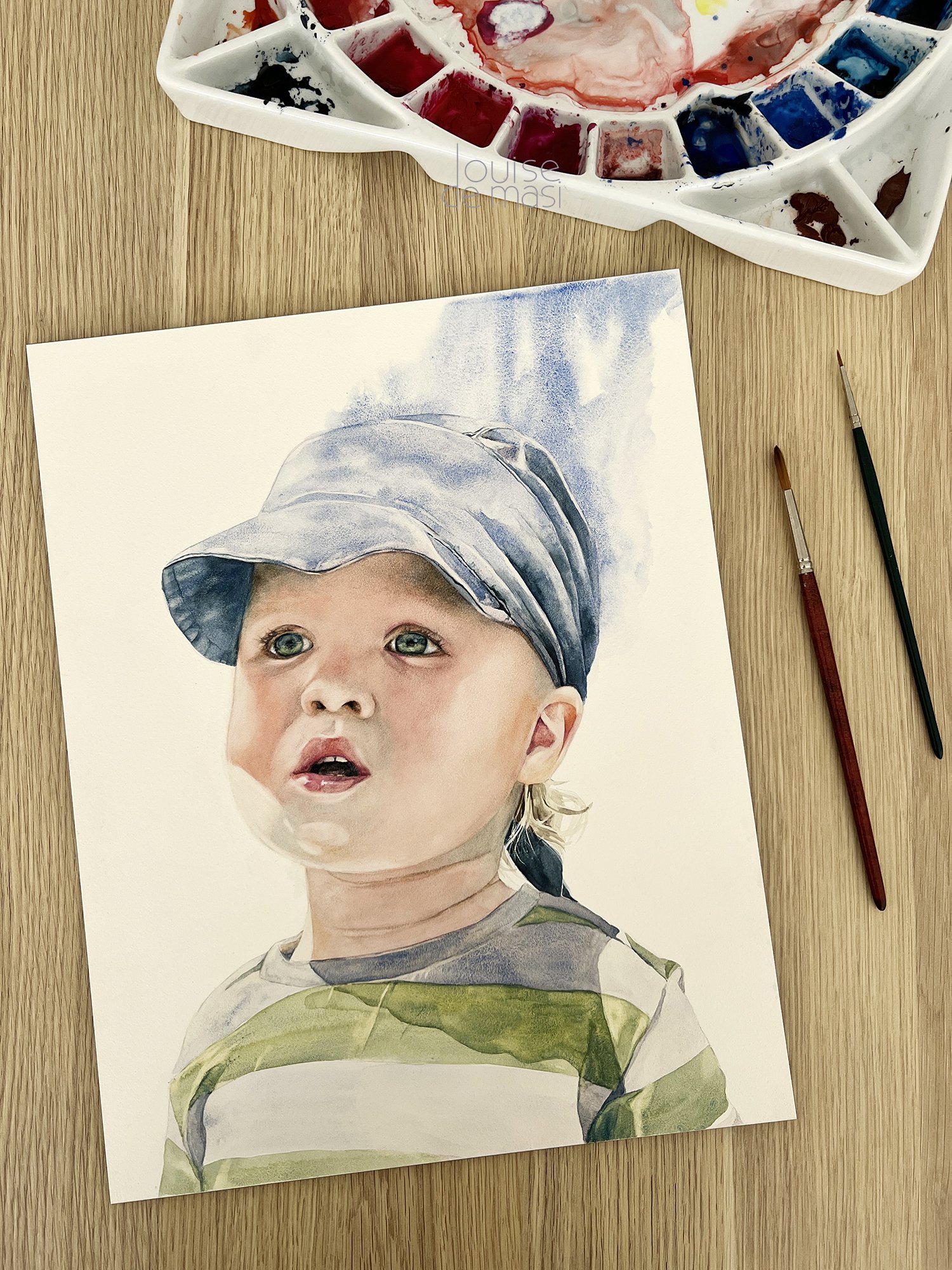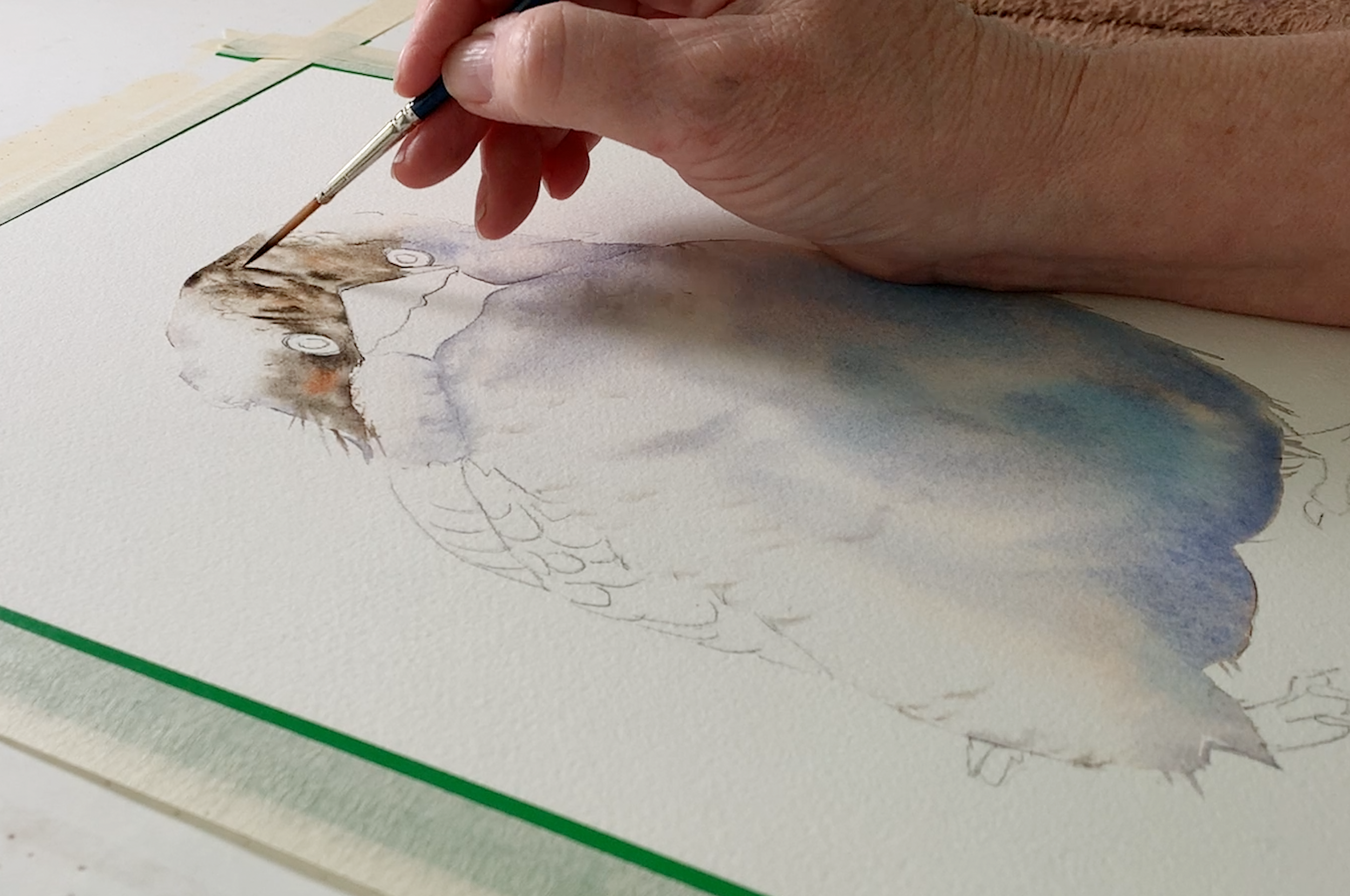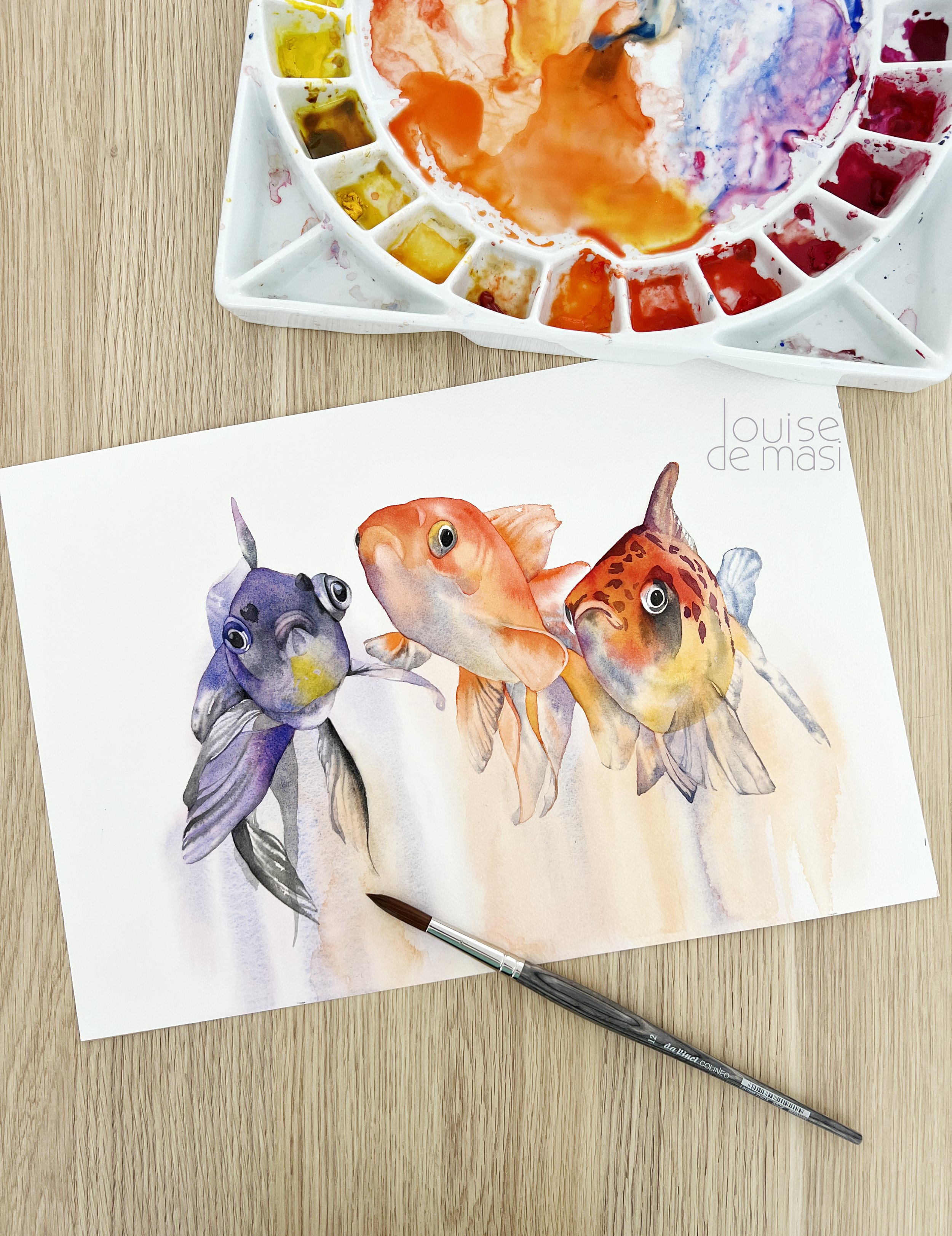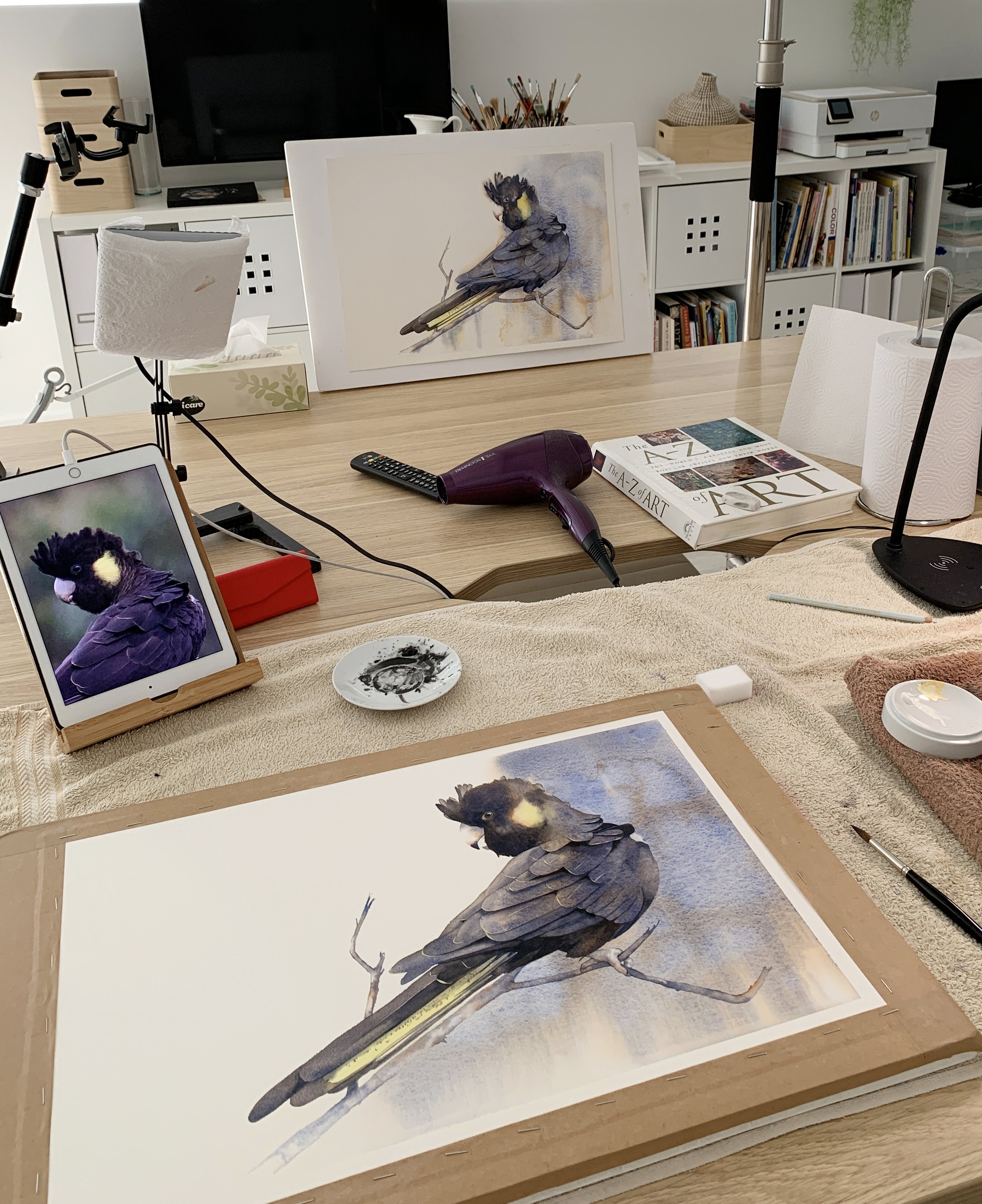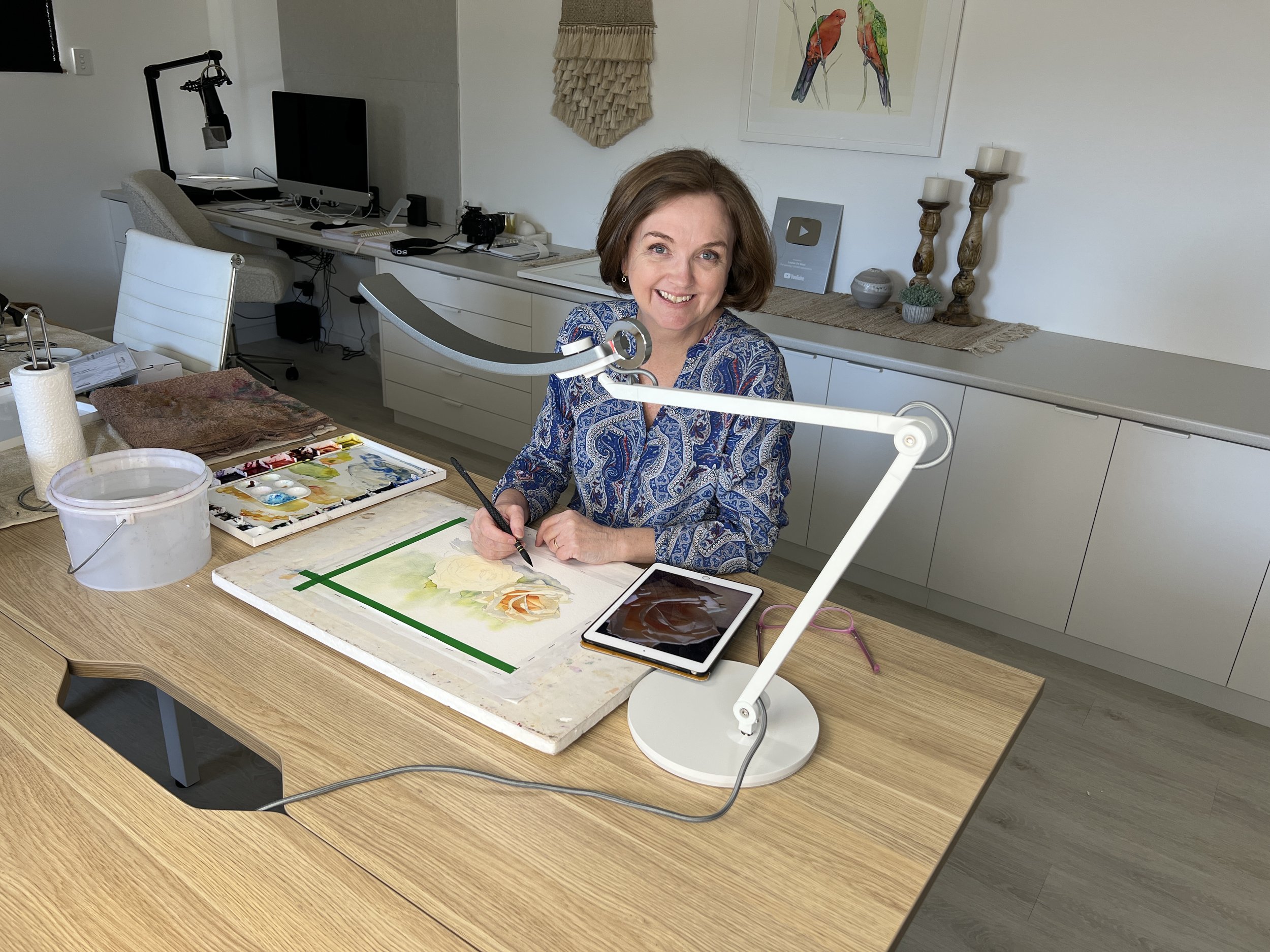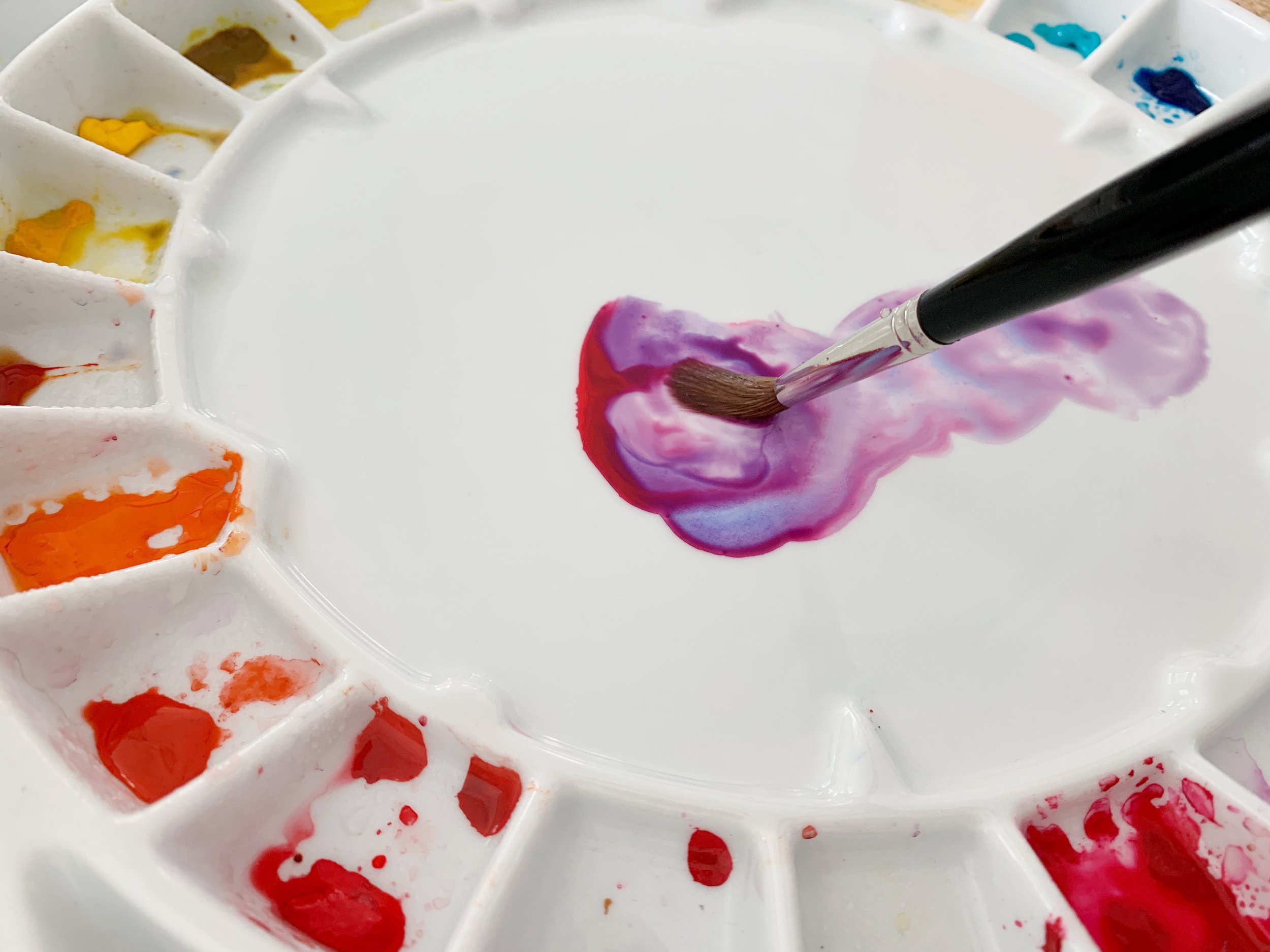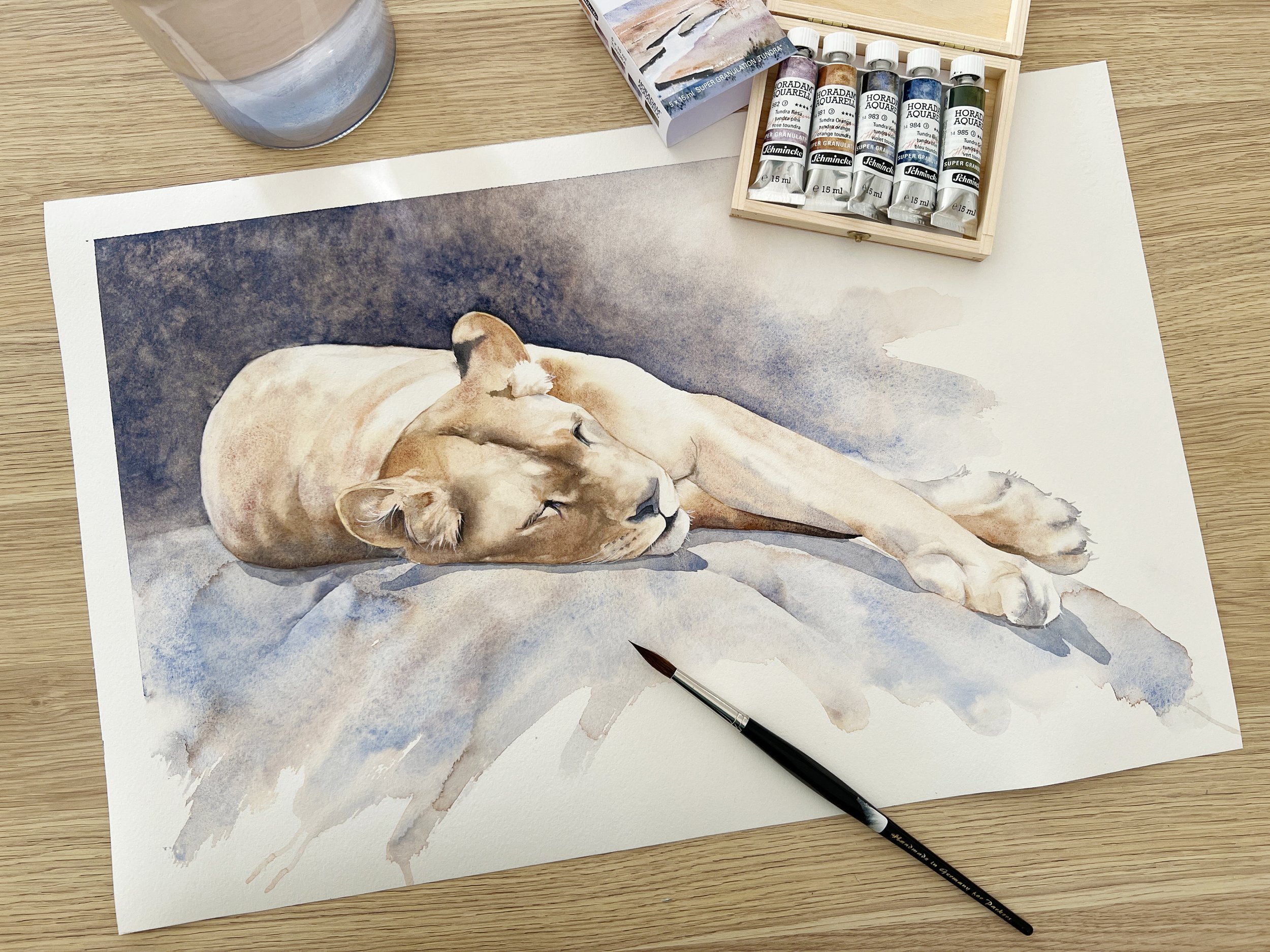Opacity is influenced by the degree of dilution in watercolour paints. Water is used for diluting watercolour paint, and the extent of dilution directly impacts the tonal value of the paint colour. It's worth noting that transparent pigments, when applied to the paper at their full intensity (with minimal water added), can appear opaque. On the other hand, when water is used to thin down opaque pigments, they can show a more transparent quality.
Read MoreI refer to a lost edge as an edge that is absent. A lost edge is painted by allowing the adjacent colours or values to blend or bleed into one another. In the Leucadendron painting below I have obscured the edges of some of the bracts and leaves by making the background colour the same colour as the subject.
Read MoreThe pre-mixed blacks appear a bit dull and uninspiring compared to the black I mixed myself. There's just something about the personally mixed hue that adds a touch of life to it. It's subtle, but it makes a difference.
When you mix blacks you can also adjust the temperature of the colour which will add some life to your paintings. Because you are mixing colours together, you are in control of the ratios. If you want a cool black, mix more of the cool colour you are using. If you want a warm black use a bit more of the warm colour you are mixing with.
Read MoreThe goal of using a limited palette is to achieve color harmony, simplify the decision-making process, and gain better control over the interaction of colors in a painting. You use a limited palette to create balanced, cohesive, and visually pleasing paintings.
It's important to note that a limited palette is not 'limiting'. Hazel Soan emphasises that working with a limited palette doesn't confine your creativity; instead, it sets you free. It empowers you to paint fearlessly, secure in the knowledge that your colors will harmonise effortlessly.
Read MorePainting on Aquabord offers a unique experience compared to traditional watercolour paper. Watercolour paper encourages exploration and experimentation, striking a delicate balance between control and spontaneity. The paint dances over the wet paper, producing surprising and delightful effects.
However, painting on Aquabord requires a distinct and different approach. The clay surface is absorbent and it doesn't stay wet for long. When I use it, I have to change my normal painting method.
Read MoreWhen creating drawings for watercolour paintings, you need to select and include essential information while omitting unnecessary details. Planning plays a crucial role in guiding these decisions it serves as a roadmap, allowing you to make informed decisions about what to emphasise in your line drawing.
Begin your painting process by carefully choosing your reference material, prioritising clear focal points and well-defined shapes that will translate effectively into your drawing.
Read MoreTo test both of these mediums, I took two glasses and used two pipettes. In one glass, I put 5 drops of gum arabic, and in the other, I added 5 drops of ox gall. Then, I painted rectangles of each solution in my watercolour diary, alongside a rectangle using just plain water. I watched them dry, and indeed, the rectangles with the mediums mixed into the water stayed wet longer than the rectangle with plain water. However, the difference in drying time was marginal. Nevertheless, I was still hopeful that these mediums would make a difference to blending and drying times when I was painting.
Read MoreThere are a few different watercolour techniques you can use on both a wet surface, and on a dry surface.
Get yourself a 100% cotton watercolour journal and spend some time practicing all of the blending techniques I have described below.
Read MoreUnlike the wet-on-dry method, glazing is a technique that allows you to adjust the colour and tone of an existing area without altering its underlying details.
Glazing adds richness and complexity to your watercolour painting by modifying the colour and creating subtle variations, making it a valuable technique for achieving depth and complexity in your artwork.
Read MoreYour personal art style refers to the unique and distinctive way in which you express yourself through your work. It is your artistic voice. It is the result of your personal preferences, experiences, influences, and creative decisions. A personal art style encompasses your individual techniques, subject matter choices, colour palette, compositional preferences, and overall visual language. It is unique to you and it's a reflection of your personality and creative identity.
Read MoreSometimes blooms can be a problem on a painting. For example, if you were painting a clear sky you don't want a bloom to appear on the drying wash. As the drying process advances, you'll notice the paper reaches a certain point where it is no longer entirely wet but not entirely dry either. This 'drying point' is crucial in avoiding blooms. When you reach this stage, resist the urge to continue working in the same area. Instead, shift your focus to other parts of the painting that require attention. Working elsewhere during this stage helps prevent accidental blooms.
Read MoreWhen working wet on wet, the fluidity of watercolour paint is one of its characteristics that makes it so appealing to use. Some artists say that a watercolour painting often paints itself. This is because of the spontaneous and unpredictable nature of working with watercolor. It captures the idea that watercolor, due to its unique properties, can sometimes lead to unexpected and beautiful results that may seem to emerge organically, almost as if guided by the medium itself.
Read MoreIf you are like me, you probably frequently struggle with perfecting your technique, and there are times when your paintings may fall short of your expectations. Instead of throwing in the towel, persevere and strive for improvement. Don't give up easily and continue to push through your problems.
Read MorePainting in watercolour is magical! I became captivated by it in 2011, and my excitement for it has not waned since then.
With its delicate washes, amazing luminosity, and unpredictable nature, once watercolour has you in its spell there is no turning back. Every brush stroke becomes an adventure as you watch the wet paint dance over the paper. There is no other medium like it.
Read MoreWhen you mix colours it’s a good idea to start with the lighter colour or the colour that has the lighter value.
For example, if you want to mix green, it’s best to start with yellow and mix blue into it gradually until you reach your desired colour, rather than the other way around where you start with blue and mix yellow into it. Blue has a darker value than yellow- it is more dominant than yellow.
Doing it this way will reduce paint wastage.
Read MoreGlazing is useful for creating depth, luminosity, and richness in a watercolor painting. By gradually layering colours, you can create subtle shifts in colour and tone, enhancing the overall vibrancy and complexity of your artwork.
You can also use watercolor glazing to increase color harmony through your painting.
Read MoreIt's called negative painting because it refers to the technique of painting or utilising the area of negative space around a subject. You are effectively, painting the negative spaces in order to leave the positive shapes.
Negative spaces on a painting are those empty areas that surround your subject. The positive spaces or positive shapes, are the subject itself.
Read MoreThe easiest way to tell whether a watercolour pigment is granulating is to look at a colour chart of the paints you use. The paint manufacturers indicate on their charts whether a pigment is granulating or not. You can buy the charts or you can go online and download them from the paint manufacturer's website.
Read More



